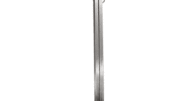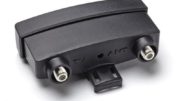One of the nice things about digital broadcasting is that a lot of it takes place on UHF frequencies. That lets you use UHF antennas, which tend to be fairly compact when you compare them to their VHF/UHF counterparts. Unfortunately, there are a lot of television markets that still have at least one VHF station, and that means you’re still using a VHF antenna. And, that does lead to the question, why do VHF antennas end up being so darn big?
Mo’ spectrum, mo’ problems
There are several reasons for this, but the biggest issue is that VHF antennas tend to be designed to cover the entire spectrum from channel 2 to channel 13 while almost all VHF broadcasting today only takes place on channels 7 through 13. New antenna designs are expensive to create. There’s nothing wrong with designing an antenna for the way broadcasting was done in the 20th century. So, most designs are just slight modifications from what was available on the market prior to 2006 when the digital broadcasting transition started. In theory a newer VHF antenna could be a little smaller.
A little about antenna design
Another really important distinction is that different frequencies respond well to different size antennas, and the higher the frequency, the less picky you have to be with an antenna. A UHF antenna tends to work well for all UHF broadcast frequencies, while for VHF, you really want a separate antenna for every 2-3 channels. That’s the whole point of having all those antenna elements on a VHF antenna… each one specializes in picking up a different set of frequencies, and actually each element of a “Yagi” antenna is actually an antenna all by itself.
Here’s why indoor antennas are different
Indoor VHF antennas tend to not have all those elements because they can rely on you to reposition the antenna. Repositioning the antenna actually changes its size relative to the broadcast tower, making more or less of the antenna usable for reception and therefore tailoring it for different frequencies. That sort of finagling isn’t necessary with UHF antennas because a single antenna does a fairly good job of picking up all broadcast frequencies.
Let’s say you live somewhere where you need an outdoor VHF antenna. The problems is that don’t have the room for one. You can at least take heart that most UHF antennas don’t actively block VHF signals. There is a possibility that it can be done. You may need some fancy positioning. If you’re close enough to the towers, you’ll get VHF reception from a UHF-only antenna. It’s obviously not what it’s designed for but it’s worth a try. Usually you’re just talking about one channel, and it’s possible that one channel isn’t as important to you. You can also set up an indoor antenna just for VHF and use a combiner to use only VHF signals from one antenna and UHF signals from the other.
If you’re not sure which channels are on VHF or UHF, we’re happy to help. If you want to do it yourself, you can consult a site like tvfool.com or antennaweb.com. Remember that the channel number on your TV is different from the actual broadcast channel. That means what you see as channel 4 might actually broadcast on channel 42.
When you’re ready for an antenna…
Why not try SolidSignal.com? We have the best selection and the best prices, plus tons of pre-sale support available. Get the right antenna for your needs, with our help!





